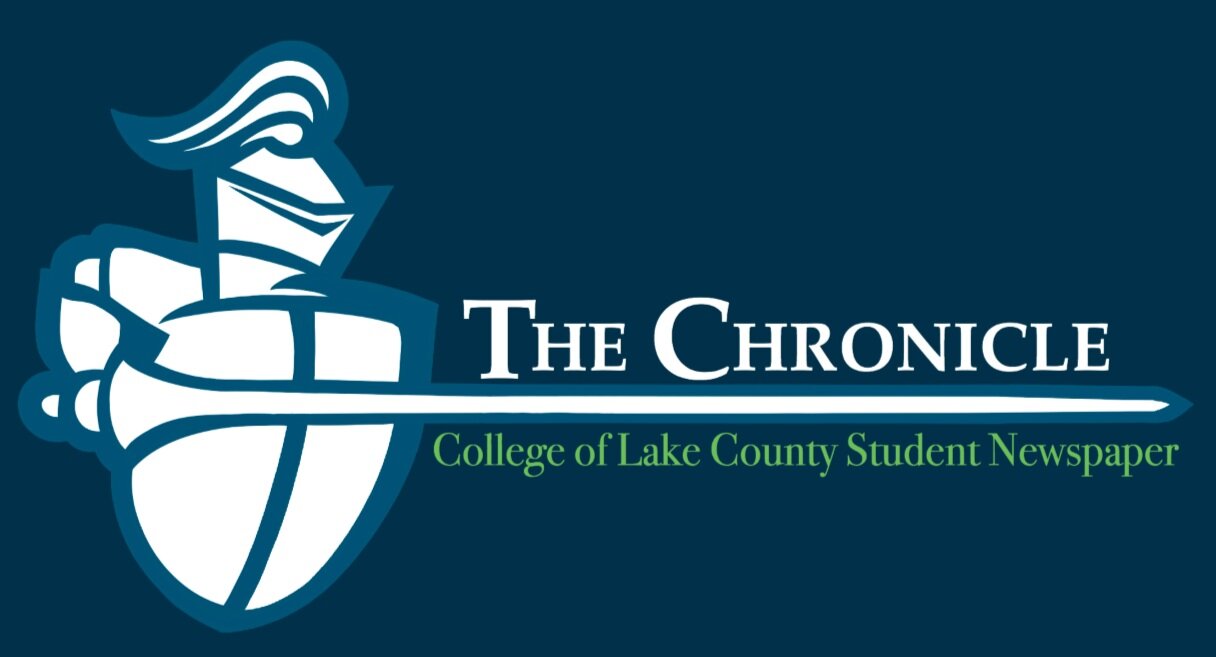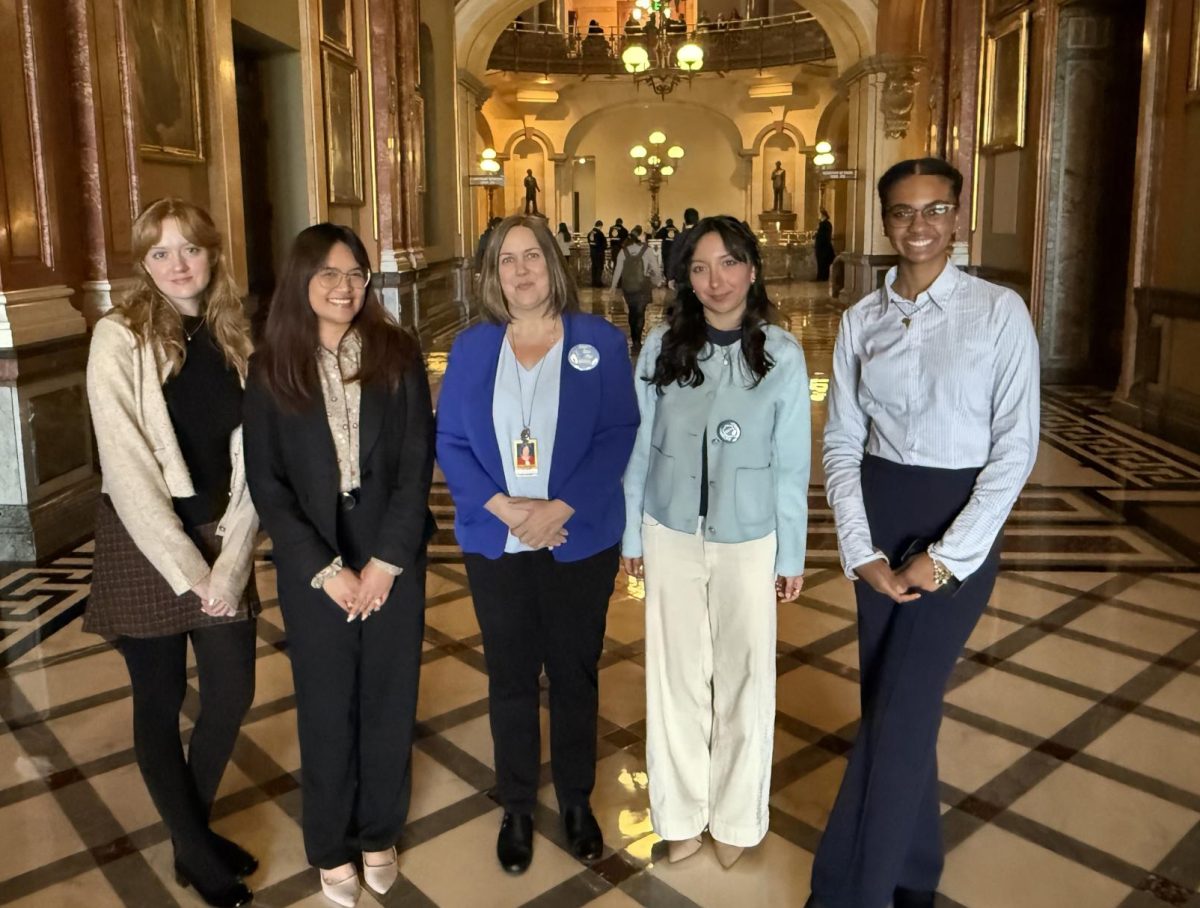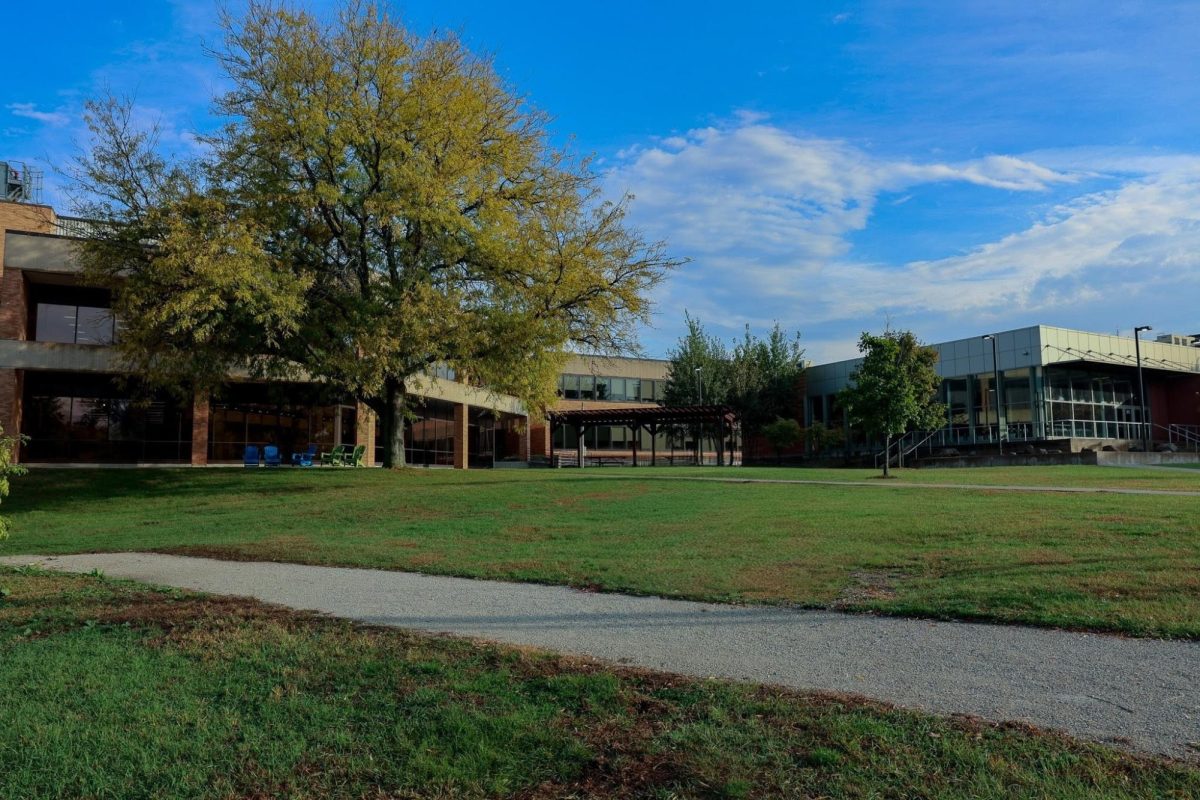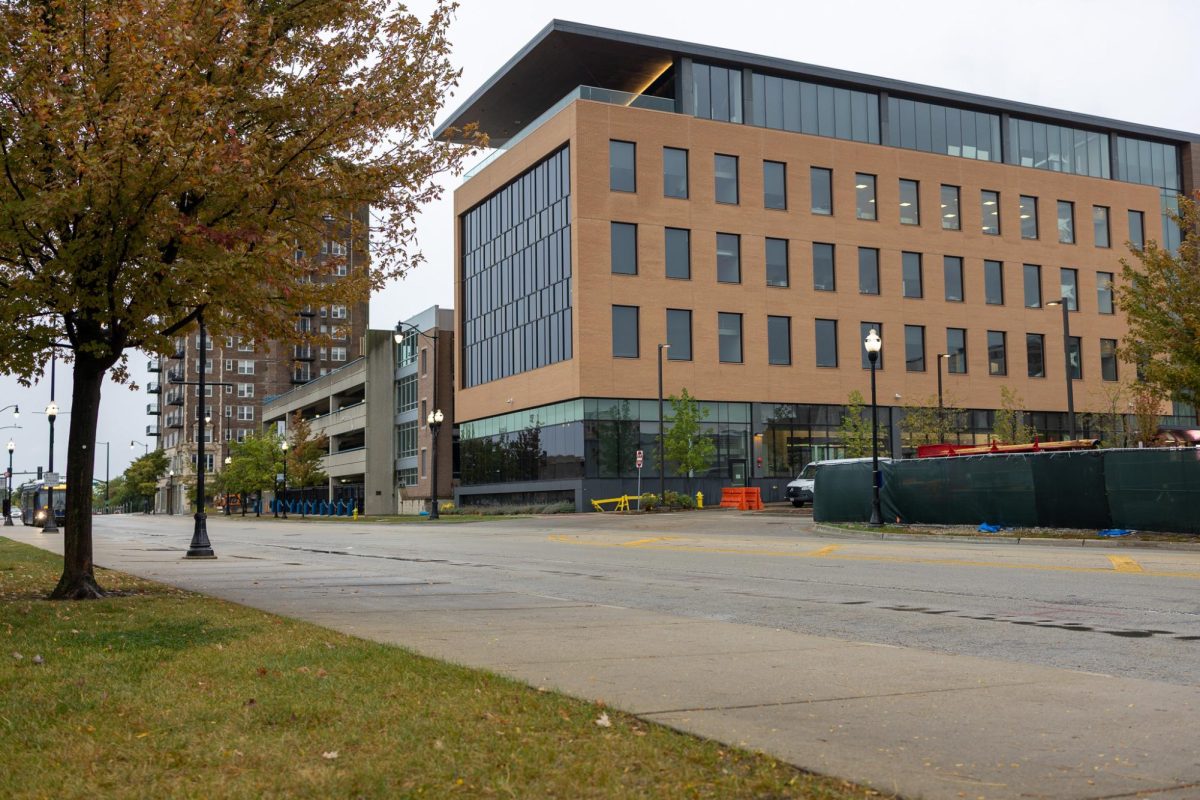Student Government Association (SGA) members traveled to Springfield April 19 to lobby for Wrap Around Student Services, but the main topic was the feasibility of four-year programs at community colleges like CLC.
The push for community colleges to offer four-year programs came after Governor JB Pritzker announced a proposal to consider doing so during a March 3 visit to Lewis and Clark Community College in Godfrey.
“As the home of the third largest community college system in the nation, Illinois should be doing all that it can to leverage these world-renowned institutions to meet those goals,” Pritzker said. “We have some really terrific four-year institutions that are a vital part of the higher education system in Illinois, but we need to recognize that there are geographic, financial, and accessibility constraints that close off too many students from attending those schools.”
The SGA members who went to Springfield agreed with Pritzker. Jianna Buque, the former SGA secretary, said community colleges offering baccalaureate programs would be a great help in addressing concerns of students and the community.
“Community colleges are a cornucopia of multiple resources, affordable prices and flexible schedules,” Buque said. “So, when I first heard about it, it was amazing. When you go to a four-year institution, those rates and those factors vary and can pose as an obstacle for students to achieve getting a baccalaureate.”
SGA President Gwendolyn Thommes said the purpose of their trip was to make education more accessible to the public by adopting important baccalaureate programs.
“A lot of people are going to community colleges for the sake of accessibility,” Thommes said.
Outgoing SGA vice president Imani Mugo said that the addition of four-year programs will provide low-income students access to jobs require those degrees.
“it’s a necessary addition,” Mugo said. “For a lot of jobs, it’s a minimum requirement but not everyone can afford it.”
Outgoing SGA president Katherine Torres said the overall goal for the bill is to provide programs that will benefit the community.
“It’s not to replace anyone or any other program,” Torres said. “It is an effort to directly fill in the gaps that these communities have.”
Carol Dikelsky, director of Communication and Engagement/Legislative Liaison, accompanied SGA to the event. She said if the bill were to pass, CLC would focus on adopting programs that centered around early childhood development, manufacturing and nursing.
“That’s the purpose of the bill — to have the workforce in your local community college area benefit from people having four-year degrees,” Dikelsky said
A concern students face when pursuing higher education is the tuition cost of many four-year institutions. Community colleges offer courses at a lower cost, making a baccalaureate degree more accessible for low-income students.
Thommes explained that some students can’t afford the tuition of a four-year school. Others have children. They can’t travel out of Lake County because they have sons and daughters who depend on them being home.
A first-year nursing student who asked not to be named said if CLC offered a four-year BSN, she would be able to spend more time with family.
“It’s the reason why I’m here,” she said. “We can’t move.”
When her time at CLC is done, she said she doesn’t know what she is going to do but added that she would “eventually figure something out.”
Another nursing student, Ashley Bauer, said she came to CLC because it was “cheap.”
“If this place had a BSN, I would definitely stay,” Bauer said.
Debbi Krachtus, a fourth semester nursing faculty member, said the proposal to have four-year programs at community colleges isn’t new. In the 20 years she’s been teaching, it’s been proposed twice, the last time in 2018.
“I don’t know if it’s ever going to pass,” Krachtus said.
Krachtus said CLC has dual credit programs with other colleges that make getting a BSN easier.
“Our students could be in the nursing program and enrolled in SIU and UIC,” Krachtus said. “So, when they graduate, they only have maybe three classes and they get their BSN”
Dual credit programs are often designed to reduce the overall cost of higher education. However, because it’s still a four-year college, they still have higher costs than a community college. Krachtus said she recommends that nursing students work as patient care technicians.
“If they work part time at the hospital, they get tuition re-imbursement” Krachtus said. “That’s usually around $5,000 a year.”
Although she supports CLC adopting four-year programs, Krachtus said CLC already does a lot to help students. If they were to adopt the program, it would require a lot of changes. CLC would have to hire more staff and rearrange its curriculum to fit the new program.
House and Senate members are divided on the issue, and the bill has yet to pass the General Assembly. When SGA members met with state senators, they said legislators seemed open to listen to their point of view but responded with concerns and counterpoints to the bill.
They recalled getting the response of “OK, but where’s the data?” and were asked to return with more empirical and objective evidence to support a demand and the benefit of implementing four-year programs at community colleges.
Another counterpoint was CLC’s University Center, which provides CLC students with a four-year program close to home. Thommes said that it’s not always enough.
“It’s a great foundation and a great opportunity for students, but it also doesn’t have everything that is needed,” Thommes said.
She said expanding CLC’s programs might also help introduce more programs at the University Center. However, state senators weren’t too receptive on that point.
Many four-year institutions oppose letting community colleges provide four-year programs. With diminishing enrollment numbers plaguing four-year institutions, they fear having to compete for students.
“Education shouldn’t be a luxury,” Torres said. “It should be a given. Everyone should be educated or have the opportunity to be educated. These big schools charge a lot of money for these degrees.
“We are taking away from these four-year institutions, but the fact is they have been taking away from us. Four-year institutions have been taking away from low-income communities that need people to fill in gaps. I don’t think it’s unfair that we provide these programs that other four-year institutions provide.”
Thommes said students who want to go to college also want to have the “college experience” that comes with four-year institutions.
“Students are going to these schools for a number of different reasons,” Thommes said. “Making education more accessible to people who can’t afford to go to these four-year institutions wouldn’t take anything away. Students who are able to go there are going to. It’s two different sets of wants and needs. This will just make it so even more people get an education.”
Buque said competition for recruiting students already exists, and whether a college offers two- or four-year programs won’t change that.
“There are going to be some schools that offer stronger studies for a specific pathway,” Buque said. “So, the logic that ‘because you are offering something it inherently takes something away from us’ is not fair to assume.”
In the fall semester SGA plans to reach out to state legislators to advocate for more funding to the wrap around services and convince them to support a bill to adopt four-year programs at schools like CLC.







